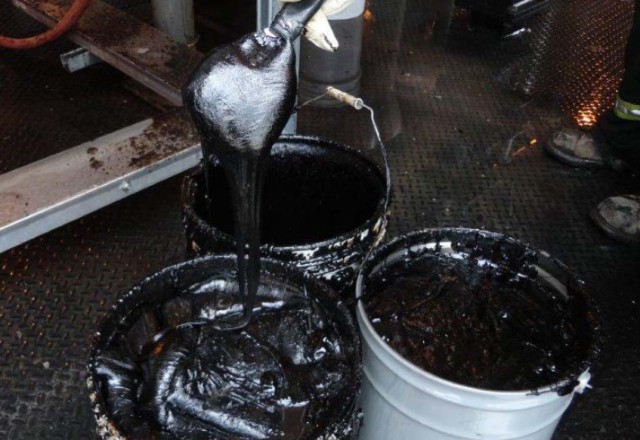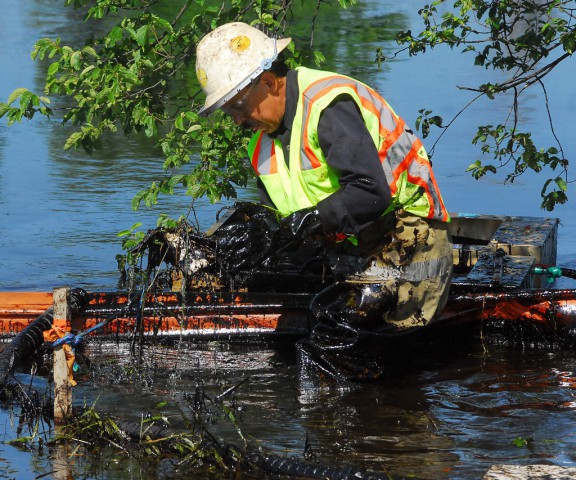
What we don’t know
The things we don’t know about dilbit are worrisome given that TransCanada wants to have the product flowing through our watersheds and into the Bay of Fundy by 2020. An unpublished, federally-commissioned review of the environmental impacts of bitumen on water listed 10 areas where knowledge is lacking:
- Toxicology: Research on the biological effects of oil sands products is lacking. Report found no peer-reviewed articles at all.
- Bitumen in water: There is little information on how bitumen, diluted bitumen or products used to dilute bitumen behave in water.
- Metals: Although bitumen has different heavy-metal concentrations and components than conventional oil, their behaviour in a spill hasn’t been studied.
- Condensate: Not much is known on the toxicity of condensate — a lighter hydrocarbon used to dilute bitumen for pumping — once it enters a body of water.
- Pathways: The mechanics of how bitumen and other oil sands products interact with organisms is unknown.
- Air toxicity: More research is needed on the toxicity and deposition of oil sands hydrocarbons through the air.
- Specific water bodies: Little research has been done on the effects of hydrocarbon spills specific to Canadian waters such as the Great Lakes.
- Photo-toxicity: Studies should be conducted on whether chemicals in bitumen are made more toxic by sunlight, as happens with some hydrocarbons
- Dispersants: More needs to be known about the interaction between bitumen, the environment, and dispersants, which are chemicals sometimes used to break up and accerlate the decomposition of oil spills.
- Ice: The behaviour of oil, bitumen and dispersant in the ice-choked, cold and dark waters of the Canadian Arctic is largely unknown.

What we do know
The science is starting to emerge, and we have some real-world experiences — like the Kalamazoo River spill in Marshall, Michigan — that show how dilbit reacts in water. Dilbit’s reaction in water seems to depend on many factors, such as ‘heaviness’ of the product, temperature, clean-up time, wave action and sedimentation of the waters. Whereas dilbit is a concoction of many compounds, it breaks down into its original components when spilled. Some are lighter and evaporate, such as natural gas, leaving the heavier bitumen to sink. The oil spilled in the Kalamzoo floated for several days and then sank. The cleanup required dredging the lake.
The cost of the Kalamazoo spill is also an indicator of how hard dilbit is to clean up. While not the largest oil spill in U.S. history, it is the most expensive to date. Based on the Pipeline and Hazardous Materials Safety Administration’s pipeline incident database, the average cleanup cost of every crude oil spill from the past 10 years in the U.S. was $2,000 per barrel. The Kalamazoo spill has cost upwards of $29,000 per barrel. Long-term cleanup of a spill remains unknown, as sunken bitumen can be absorbed or trapped by sediments and debris, becoming difficult or impossible to see and clean. Disturbances in the shoreline, habitats, wildlife and food chain can persist for years as deposits of bitumen can be released later and over time.
In Canada, the rate of overall pipeline incidents has doubled since 2000. The National Energy Board’s pipeline database also shows a tripling in the rate of product releases — ranging from small leaks and spills to large ruptures — in the past decade. More than four reportable releases happened for every 10,000 km of pipeline in 2000, and by 2011, that rate had risen to 13 per 10,000 km. Considering the Energy East pipeline length alone, that rate represents six product release incidents across the entire route and two incidents in New Brunswick.
